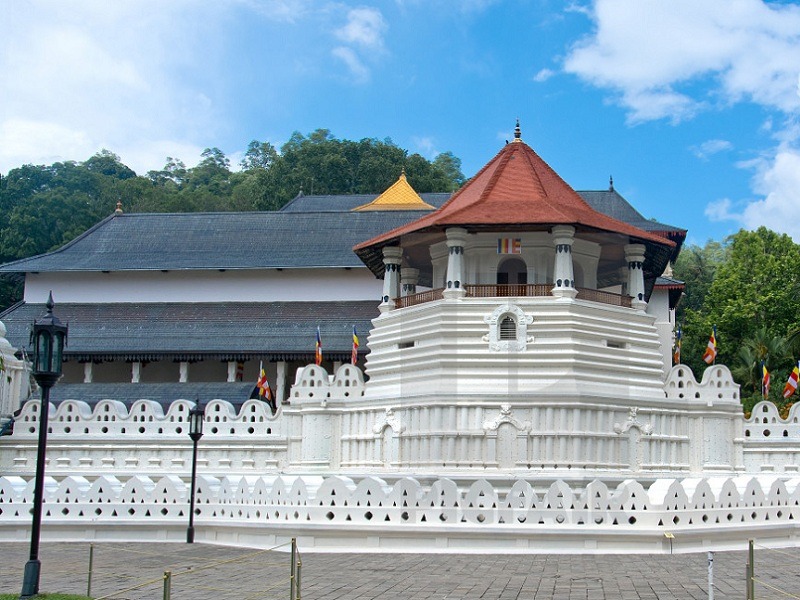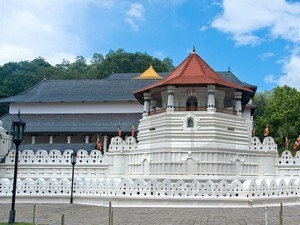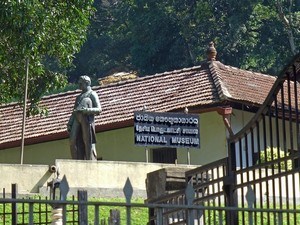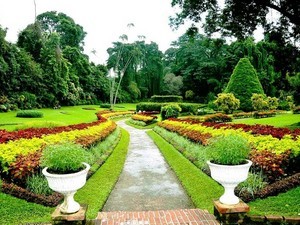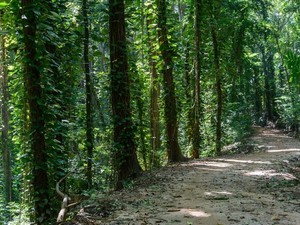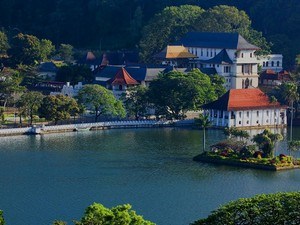Temple Of The Sacred Tooth Relic, Kandy - Timings, Festivals, History, Darshan, Pooja Timings
 #1 of 11 Places to Visit in Kandy
#1 of 11 Places to Visit in Kandy
 Distance (From Kandy Railway Station): 2 Kms
Distance (From Kandy Railway Station): 2 Kms
 Trip Duration (Including Travel): 1 Hour
Trip Duration (Including Travel): 1 Hour
 Transportation Options: Cab / Auto
Transportation Options: Cab / Auto
 Travel Tips: None
Travel Tips: None
At a distance of 2 km from Kandy Railway Station, the Temple of the Sacred Tooth Relic is a Buddhist temple located to the north of Kandy Lake. It is considered as one of the most sacred Buddhist temples in Sri Lanka and among the most remarkable places to visit in Kandy as part of Sri Lanka Tour.
Sri Dalada Maligawa or the Temple of the Sacred Tooth Relic is located in the royal palace complex of the former Kingdom of Kandy. This is the site of preservation of Lord Buddha's tooth, which is venerated by Buddhists around the world. The relic has played an important role in the local politics since ancient times as it is believed that whoever holds the relic holds the governance of the country, which caused the ancient kings to protect it with great effort. The temple was designated a UNESCO World Heritage Site in 1988.
According to legend, the tooth relic was preserved in Kalinga after the parinirvana of Lord Buddha. It was smuggled to the island in 313 CE by Princess Hemamali and her husband, Prince Dantha and handed over the tooth relic to Sirimeghavanna of Anuradhapura. The king enshrined it at Meghagiri Vihara (present-day Isurumuniya) in Anuradhapura. With the rise of the Kingdom of Kandy, the Tooth of Lord Buddha was brought to the city, where it was housed in a two-storey building by the King Vimala Dharma Suriya. It was carried to Meda Mahanuwara in Dumbara in 1603 when the Portuguese invaded Kandy. It was brought back to Kandy by King Rajasingha II almost half a century later and rehoused in a building identical to the former building.
The current structure of the temple was built by King Vira Parakrama Narendra Singha in the early 1700s. The octagonal Paththirippuwa and moat were added during the reign of Sri Wicikrama Rajasinha. The royal architect Devendra Moolacharya is credited with building the Paththirippuwa. Originally it was used by the king for recreational activities and later it was offered to the tooth relic, it now houses the temple's library. The temple was badly damaged during the 18th century colonial wars against the Portuguese and Dutch, and the wooden structures were subsequently rebuilt using more robust stone. In more recent years, the temple was damaged by Hindu Tamil separatists in 1998, although once again, the tooth relic was unharmed.
The entire temple complex was built in the classical Kandyan architecture. The main shrine has two floors containing various chambers including the one where the tooth relic is kept known as 'handun kunama'. The room housing the tooth is open to devotees to offer their prayers. However, nobody gets to see the tooth because it is kept in a golden casket inside a stupa-like structure. One can also visit the remnants of the Royal Palace of Kandy, the World Buddhist Museum, the National Museum of Kandy and Sri Dalada Museum within the complex itself.
The sacred tooth relic was brought out only once in a year during the Esala Perahera, a 10-day festival held in July or August every year to commemorate Lord Buddha's Conception, Renunciation, and First Sermon. During which the tooth is paraded around the city on a royal elephant, followed by dancers, drummers, flag and torchbearers, all decked up in their traditional costumes.
Next to the temple is the Buddhist Museum or Dalada Museum, the world's first International Buddhist Museum. The site was the former Palace of the Kandyan King, Vimala Dharma Suriya, upon which the British constructed a Victorian-era building, which housed the Kandy High Court. Created with the contribution of 17 countries, the museum contains lots of photographs, models and displays illustrating Buddhism around the world, especially in Asia. The entrance to this fantastic museum is included in the temple entrance ticket.
Timings: 5.30 AM - 8 PM
Entry: LKR. 1500 for Person



